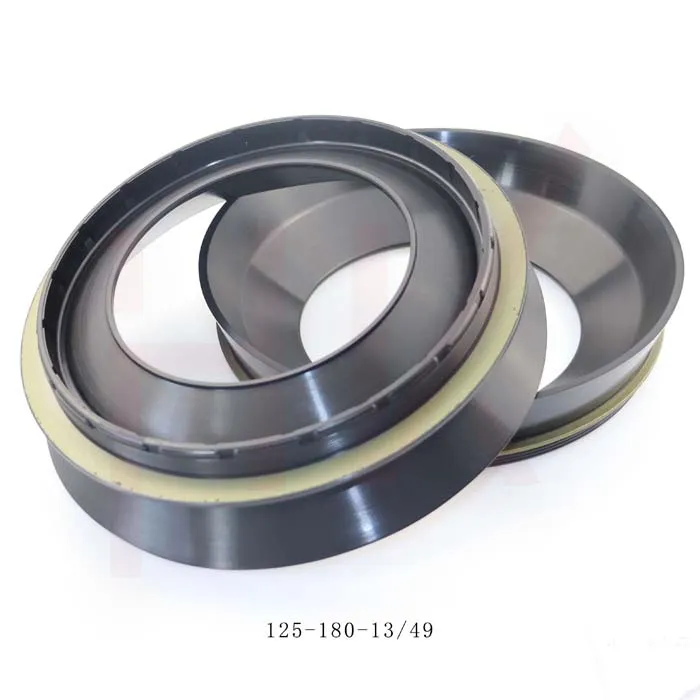Dic . 01, 2024 15:41 Back to list
dust wiper seal
Understanding Dust Wiper Seals Importance, Functionality, and Applications
Dust wiper seals are essential components in various mechanical systems, particularly those involving hydraulic and pneumatic cylinders. Their primary function is to prevent dust, dirt, and other contaminants from entering the cylinder while simultaneously allowing for the free movement of the piston. This article explores the importance, functionality, and applications of dust wiper seals, highlighting their role in maintaining equipment efficiency and durability.
What are Dust Wiper Seals?
Dust wiper seals, often referred to as simply “wipers,” serve as the first line of defense against environmental contaminants. Typically made from elastomers or thermoplastics, these seals are designed to fit on the exterior of a hydraulic or pneumatic cylinder. They create a barrier that prevents any particulate matter from coming into contact with critical internal components, thereby ensuring the reliability of the machinery.
Importance of Dust Wiper Seals
The significance of dust wiper seals cannot be overstated. In industrial settings, machinery is often exposed to harsh environments filled with dust and debris. Without effective wiper seals, contaminants can seep into cylinders, leading to premature wear, increased friction, and ultimately, mechanical failure. This can result in costly downtime and extensive repairs, impacting overall productivity and safety.
Moreover, the performance of hydraulic and pneumatic systems relies heavily on the integrity of seals. Poor sealing solutions can lead to fluid leakage, which not only wastes resources but can also create hazardous working conditions. Dust wiper seals help maintain a clean working environment by ensuring that contaminants do not compromise the internal functions of cylinders.
Functionality of Dust Wiper Seals
dust wiper seal

The design and functionality of dust wiper seals are engineered to provide optimal performance. Typically, these seals are shaped to create a lip that wipes the surface of the piston rod as it extends and retracts. This wiping action removes any dust or debris that may have accumulated on the rod’s surface, thus preventing it from entering the cylinder.
The materials used for dust wiper seals are crucial to their effectiveness. Common materials include nitrile rubber, polyurethane, and silicone, each possessing unique properties that allow them to withstand various temperature ranges, oil compatibility, and environmental conditions. Selecting the right material is vital for ensuring that the seal performs adequately under specific operational demands.
Applications of Dust Wiper Seals
Dust wiper seals are utilized across a wide array of industries. In construction and agriculture, they protect equipment like excavators and tractors from the harsh outdoor elements. In the automotive sector, dust wipers safeguard hydraulic systems in vehicles, ensuring longevity and performance. Additionally, dust wiper seals are fundamental in the manufacturing industry, where precision equipment must remain uncontaminated for optimal functioning.
Beyond these conventional uses, dust wiper seals are also finding applications in specialized fields. For instance, in robotics and automation, these seals are used in linear actuators to ensure smooth and reliable motion while preventing contamination. The aerospace industry also employs dust wiper seals in hydraulic and pneumatic systems to protect sensitive components from dirt and debris.
Conclusion
In conclusion, dust wiper seals play a critical role in the performance and longevity of hydraulic and pneumatic systems. Their ability to prevent contaminants from entering machinery not only enhances operational efficiency but also contributes to safety and reliability across various industries. As technology continues to evolve, the materials and designs of dust wiper seals will undoubtedly advance, further improving their functionality and expanding their applications. For anyone involved in machinery maintenance or manufacturing, understanding the importance of these humble yet significant components is essential for achieving optimal equipment performance and durability.
-
TCN Oil Seal Metal Ring Reinforcement for Heavy Machinery
NewsJul.25,2025
-
Rotary Lip Seal Spring-Loaded Design for High-Speed Applications
NewsJul.25,2025
-
Hydraulic Cylinder Seals Polyurethane Material for High-Impact Jobs
NewsJul.25,2025
-
High Pressure Oil Seal Polyurethane Coating Wear Resistance
NewsJul.25,2025
-
Dust Proof Seal Double Lip Design for Construction Equipment
NewsJul.25,2025
-
Hub Seal Polyurethane Wear Resistance in Agricultural Vehicles
NewsJul.25,2025
-
The Trans-formative Journey of Wheel Hub Oil Seals
NewsJun.06,2025
Products categories
















